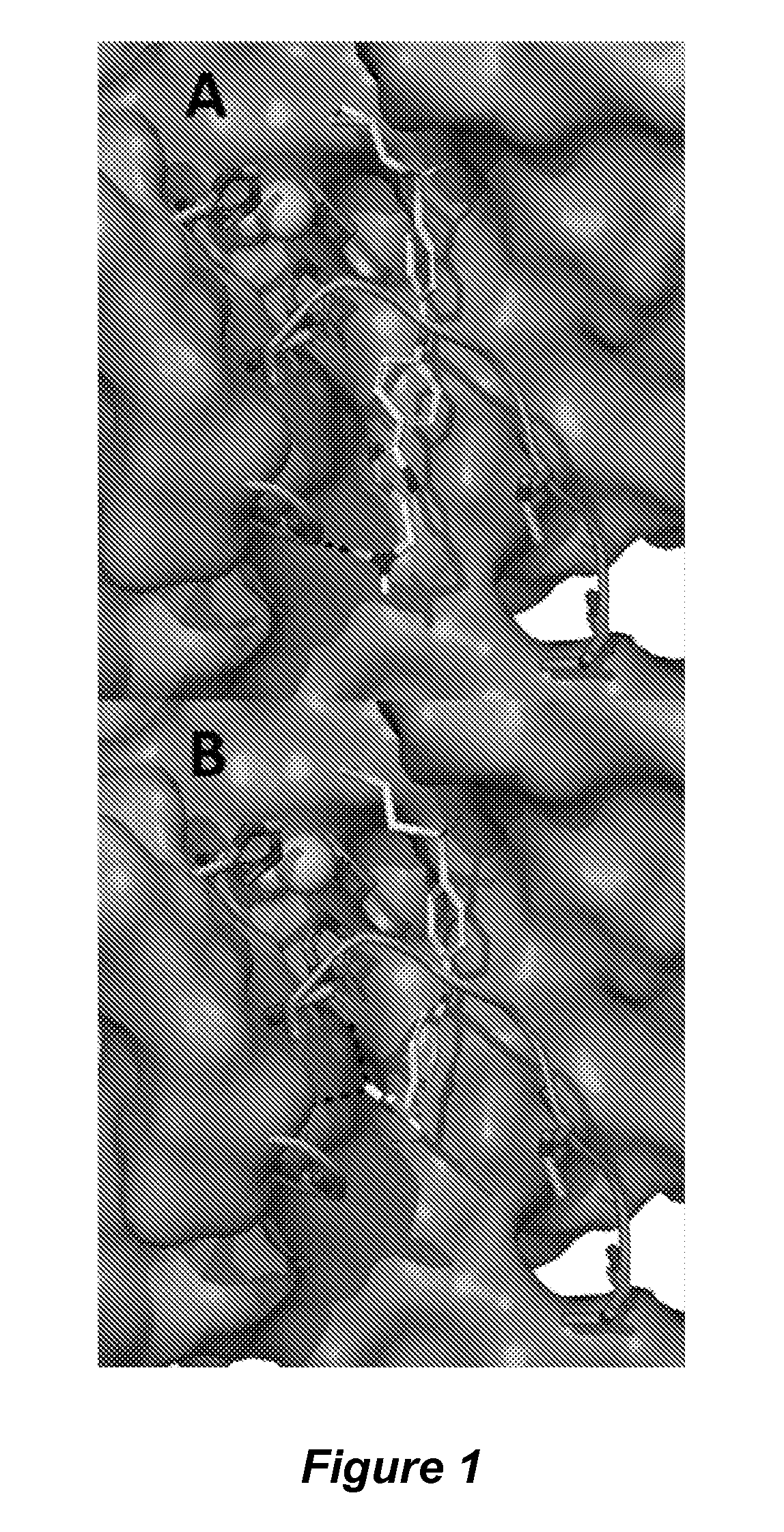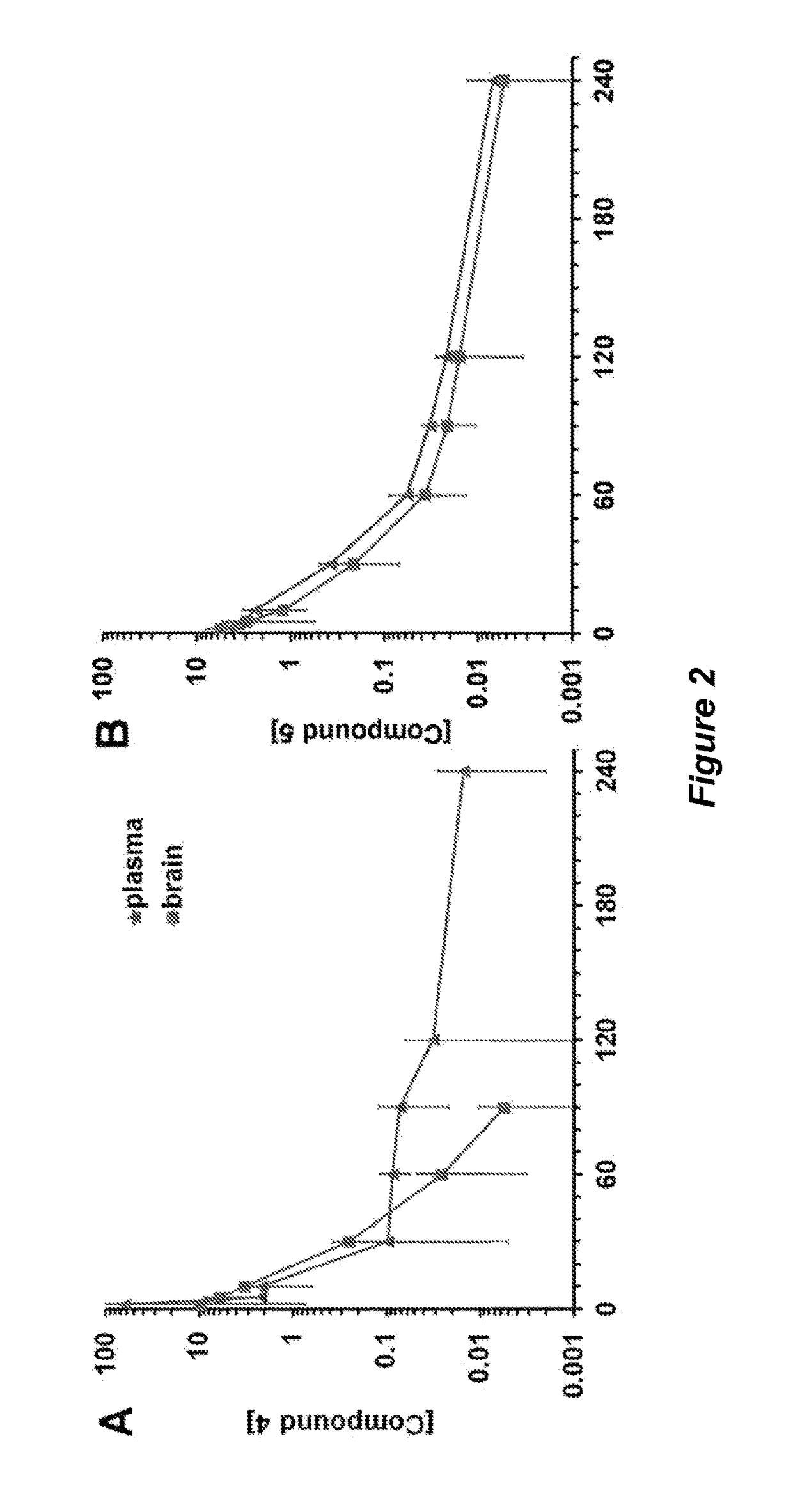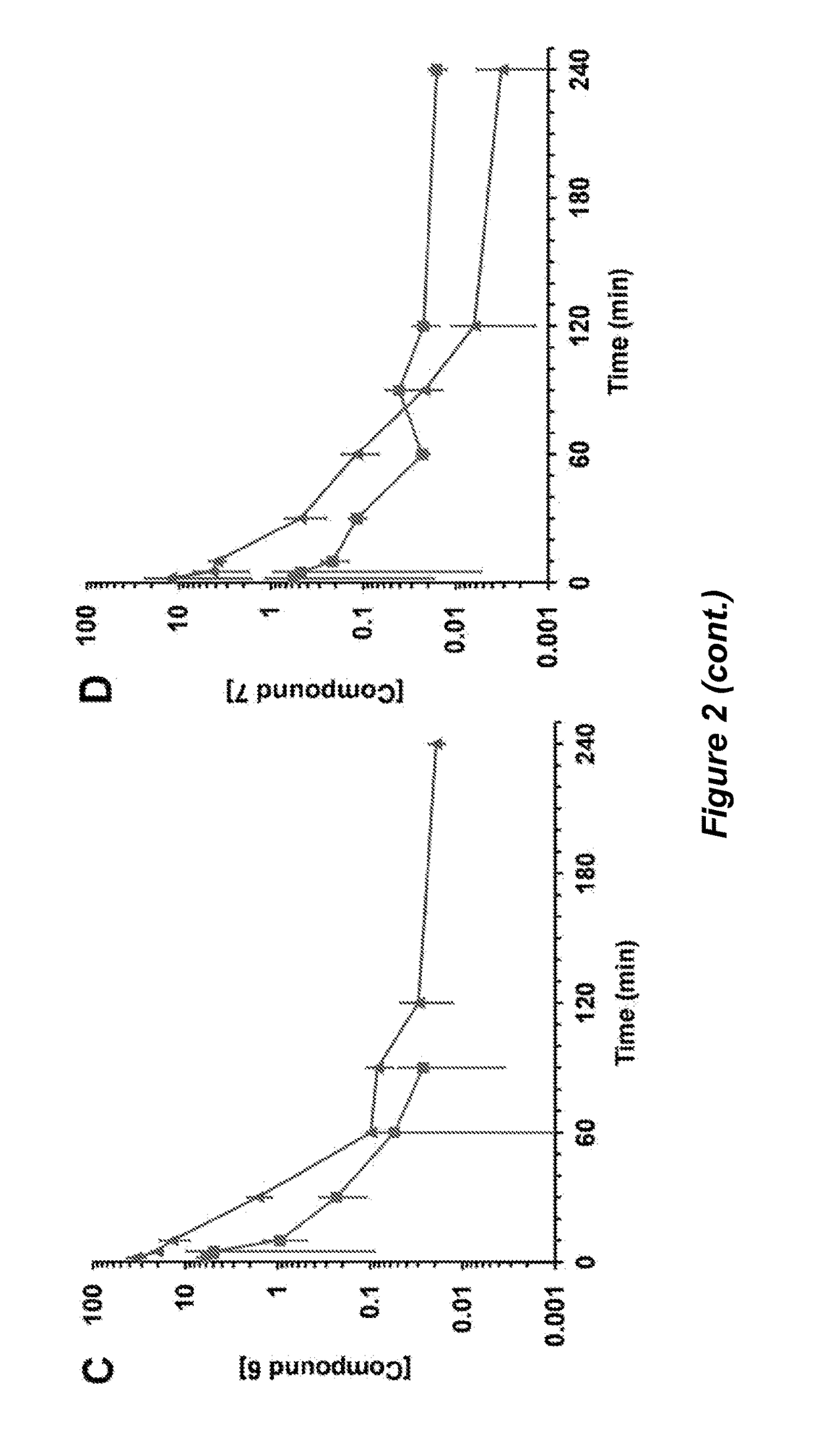Selective matrix metalloproteinase inhibitors
a metalloproteinase inhibitor and selective technology, applied in the direction of cardiovascular disorder, muscular disorder, drug composition, etc., can solve the problems of toxic side effects, toxic side effects, toxicities, etc., and achieve the effect of improving wound healing
- Summary
- Abstract
- Description
- Claims
- Application Information
AI Technical Summary
Benefits of technology
Problems solved by technology
Method used
Image
Examples
example 1
Selective Water-Soluble and Slow-Binding Matrix Metalloproteinase-2 and -9 Inhibitors that Cross the Blood-Brain Barrier
[0271]The invention provides selective MMP inhibitors such as p-aminomethyloxadiazol (4), p-aminomethyl (5, ND-336), p-acetamidomethyl (6, ND-378), and p-guanidino (7) analogs of compound SB-3CT (1), and methods for their use. The compounds are 10- to 14,000-fold more water-soluble than 1, retain slow-binding inhibition behavior toward MMP-2, and can cross the blood brain barrier (BBB). The p-acetamidomethyl analog (compound 6) is a selective nanomolar slow-binding inhibitor of MMP-2, which does not inhibit the closely related MMP-9 or MMP-14. Because of the slow dissociation of compound 6 from the target MMP-2, it results in sustained inhibition of MMP-2 even when concentrations of 6 fall below the Ki value. This inhibitor is a useful tool in therapeutic intervention and in investigations of the role of MMP-2 in neurological diseases. The p-aminomethyl derivative ...
example 2
Selective Water-Soluble and Slow-Binding Matrix Metalloproteinase Inhibitors for Traumatic Brain Injury Therapy, for Neurological Diseases, and for Wound Healing Therapy
[0304]Traumatic brain injury (TBI) is a devastating disease caused by primary and secondary injuries that can lead to a chronic disease process characterized by persistent cognitive deficits. This disease process starts with biochemical changes that result in brain cell damage and cell death over months to years later. Matrix metalloproteinase-9 (MMP-9) is at the top of the biochemical cascade of events that lead to secondary injury. We have shown that selective inhibition of MMP-9 attenuates secondary damage resulting from TBI. We have created water-soluble selective MMP-9 inhibitors to address the therapeutic need in the area of TBI treatment (Table 2.1). The compounds ND-336 and ND-378 cross the blood-brain barrier and achieve therapeutic concentrations in the brain (FIG. 5).
[0305]
TABLE 2.1Ki (MMP-2) 0.085 ± 0.001...
example 3
MMP-9 is Detrimental, MMP-8 is Beneficial, and MMP-2 is not Involved in Diabetic Wound Healing
[0313]The incidence of diabetes mellitus is increasing. In 2010, 8.3% of the population in the United States had diabetes (approximately 25.8 million Americans). Two years later, the percentage increased to 9.3% (29.1 million people). A complication of diabetes is the inability of wounds to heal, which results in greater than 60% of non-traumatic limb amputations occurring in individuals with diabetes. The number of lower-limb amputations was 65,700 in 2006, increasing to 73,000 in 2010.
[0314]Wound healing involves four stages: hemostasis, inflammation, proliferation, and remodeling. During hemostasis, blood vessels are constricted and a fibrin clot is formed. The fibrin clot releases pro-inflammatory cytokines and growth factors, followed by infiltration of neutrophils, macrophages, and lymphocytes. Neutrophils release reactive oxygen species and matrix metalloproteinases (MMPs), while mac...
PUM
| Property | Measurement | Unit |
|---|---|---|
| molecular weight | aaaaa | aaaaa |
| solubility | aaaaa | aaaaa |
| solubility | aaaaa | aaaaa |
Abstract
Description
Claims
Application Information
 Login to View More
Login to View More - R&D
- Intellectual Property
- Life Sciences
- Materials
- Tech Scout
- Unparalleled Data Quality
- Higher Quality Content
- 60% Fewer Hallucinations
Browse by: Latest US Patents, China's latest patents, Technical Efficacy Thesaurus, Application Domain, Technology Topic, Popular Technical Reports.
© 2025 PatSnap. All rights reserved.Legal|Privacy policy|Modern Slavery Act Transparency Statement|Sitemap|About US| Contact US: help@patsnap.com



